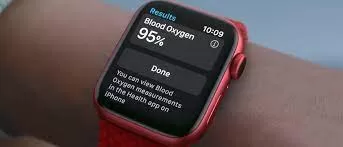
In a dramatic mid-air emergency, an NHS doctor from Hereford County Hospital in London utilized the pulse oximeter feature on his Apple Watch to save the life of an elderly woman on a Ryanair flight from Birmingham to Verona. Dr. Rashid Riaz, who was on his way to a skiing holiday, borrowed the pulse oximeter from a flight attendant when the woman, in her 70s, experienced shortness of breath.
The pulse oximeter on the Apple Watch helped Dr. Riaz monitor the patient’s blood oxygen levels, revealing low oxygen saturation. With this crucial information, he requested an on-board oxygen cylinder, allowing him to maintain and monitor the woman’s saturation levels until the flight safely landed in Italy about an hour later.
“The Apple Watch helped me find out the patient had low oxygen saturation,” Dr. Riaz mentioned. He spoke to the woman in her native Urdu, discovering her history of heart issues and reassuring her husband during the emergency. The doctor’s quick thinking and use of the Apple Watch’s pulse oximeter proved vital in providing timely assistance to the passenger.
However, Apple recently announced the discontinuation of the pulse oximeter feature in the new Series 9 and Ultra 2 Apple Watches due to a patent dispute with medical technology company Masim. The dispute centers around the software used for the pulse oximeter. The measurements taken with the Blood Oxygen app on the Apple Watch were explicitly mentioned by Apple as not intended for medical use but designed for “general fitness and wellness purposes.”
Dr. Riaz’s life-saving intervention highlights the potential of wearable technology, such as the Apple Watch, in emergency situations. Despite the recent decision to disable the pulse oximeter feature in newer Apple Watches, this incident underscores the positive impact such technology can have in real-life medical emergencies.











